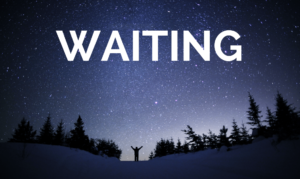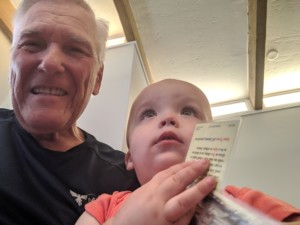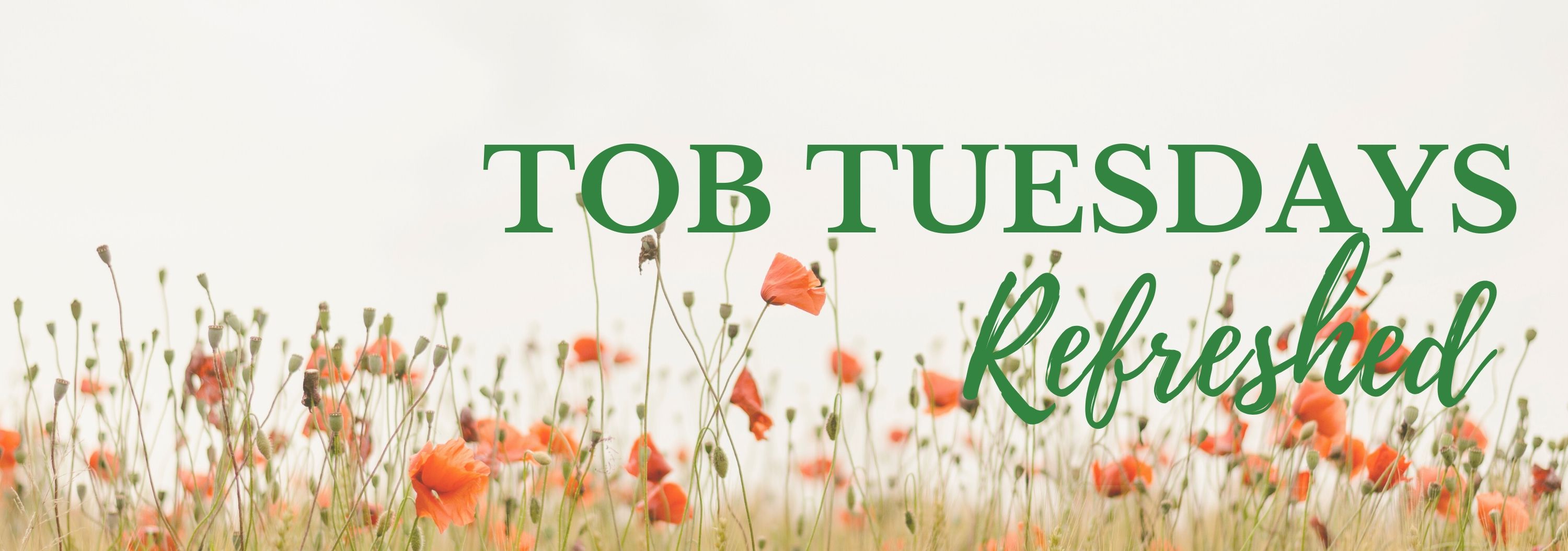Welcome to TOB Tuesdays Refreshed. Over the next few months we will revisit Katrina’s past blogs followed by Jack Henz’* reflection.
Life is an Advent by Katrina J. Zeno, MTS
 Welcome to TOB Tuesdays! My name is Katrina Zeno and every week we’ll spend a few minutes reflecting on an aspect of St. John Paul II’s monumental work, Man and Woman He Created Them, otherwise known as the “Theology of the Body.” Today’s topic is, “Life is an Advent.”
Welcome to TOB Tuesdays! My name is Katrina Zeno and every week we’ll spend a few minutes reflecting on an aspect of St. John Paul II’s monumental work, Man and Woman He Created Them, otherwise known as the “Theology of the Body.” Today’s topic is, “Life is an Advent.”
I love basketball. However, it wasn’t always so. Even though I am quite athletic, my childhood gym-time was spent learning backflips and balance beam routines, not shooting baskets. My son, on the other hand, developed a great love for basketball, requiring me to spend countless evenings and weekends watching him play. Although it wasn’t love at first sight, I gradually came to love the game.
Fast-forward a number of years to Spring 2017 when I got a brilliant idea – to watch the highlights of the NBA playoffs on YouTube since I didn’t have a TV. Off to my computer I flew, and in a mere 15 minutes, I soared from one endorphin high to the next as LeBron James & Co. drained basket after basket, hit amazing 3-pointers, and slam-dunked perfect alley-oops. I was intoxicated!
In my euphoria, I thought, “Who would ever watch the whole game when you can go from endorphin high to endorphin high without all the in-between stuff?” In that moment, a new concept dawned within me: “living by the highlights.”
We are a culture fixated with “living by the highlights.” We want to jump from peak experience to peak experience without enduring the “in-between stuff” – the unpleasant valleys of loneliness, the boring plains of daily tedium, the aching ascent of true growth. American commercialism insists we jump from Halloween to Thanksgiving to Christmas to New Year’s to Valentine’s Day to St. Patrick’s Day to Easter to Memorial Day to 4th of July to Labor Day and back again to Halloween.
The consumeristic frenzy around each “alley-oop moment” begins weeks in advance and convinces us we must have decorations, dishes, special lights, yard ornaments, and $12 pop-up cards to celebrate each event. We spurn the “in-between time” because it seems soooooooooooo boring, and we have to wait.
The great gift of Catholicism and the Catholic Liturgical year is that it is filled with waiting. While the rest of the world is shopping, shopping, shopping; piling up and then ripping open Christmas presents; gathering for sumptuous food and family laughter; and then taking down the tree, piling up the garbage, and returning decorations to their huge tubs, Catholics are just ramping up their season of celebration after four weeks of waiting. Christmas Day inaugurates the 12-days of Christmas, which leads to the Feast of the Holy Family, the Solemnity of the Mother of God, Epiphany, the Baptism of Jesus, the Presentation in the Temple, and Lent, which is 40 more days of waiting (hallelujah!) followed by 50 days of feasting (a double hallelujah!!).
If we allow the Liturgical Year to form us and our rhythm of life, then we can embrace the truth that all of life is an Advent. As human persons, times of waiting are highly significant, not meaningless. We don’t simply endure a “dead zone” in-between the highlights. We embrace the “waiting zone” as a time to be fully alive while awaiting promises to be fulfilled.
I was first introduced to this “waiting zone” by Fr. Henri Nouwen in his little booklet, “The Path of Waiting.” Rather than interpreting waiting as a waste of time, Fr. Nouwen speaks about “waiting with a sense of promise.” In the Gospels, he says, the “people who wait have received a promise that allows them to wait. They have received something that is [already] at work in them…” And here’s the kicker: “So waiting is never a movement from nothing to something. It is always a movement from something to something more” (p. 13).
Scriptural waiting is always a movement from something to something more. Why? Because in God, a Trinitarian God who overflows with abundant life and love, there is always more!
Scriptural waiting is always a movement from something to something more. Why? Because in God, a Trinitarian God who overflows with abundant life and love, there is always more! This kind of Trinitarian waiting is not passive but active. “Active waiting,” as Fr. Nouwen reminds us, “means to be present fully to the moment, in the conviction that something is happening where you are and that you want to be present to it” (p. 15).
Scriptural, Trinitarian waiting is an active, present-to-the-moment-at-hand waiting because we are deeply convinced, convicted, of God’s fidelity. We believe that Trinitarian Love and Mercy are at work in the present moment – in the deep valleys, boring plains, and aching ascent – even when we can’t see it. (Other spiritual writers have called this experience the “sacrament of the present moment.”)
I experienced this kind of active-Advent waiting in relationship to the country of Australia. In 2008, I was invited to travel Down Under to give a series of talks on the Theology of the Body. My trip was intentionally scheduled a couple months after World Youth Day in Sydney, since these huge youth gatherings with the Pope always ignite a renewal of faith wherever they occur.
And then the dot.com bust hit, and the couple hosting and financing my trip lost 80% of their savings in a bank failure. The math is obvious: no money, no trip. But I never stopped praying for God to open the door to Australia for me to speak. And although nothing appeared to be happening, not even a puff or breeze of possibility, after 10 years, the door flung wide open, and I spent July 2018 giving 48 talks in 3 cities, including an intensive 5-day, 30-hour TOB course that rocked the participants’ lives.
Through this 10-year waiting period, I experienced first-hand that my human waiting in history, in “His Story,” was not pointless. I didn’t need to dig myself out of the in-between time and catapult myself into a peak moment or peak relationship in order to “make something happen” and find meaning. The meaning (and timing!) was revealing itself with an unhurried gradualness, inviting me to live the fullness of “ordinary time” as a kind of ongoing Advent with an expectant heart. Indeed, all of us are invited to walk the path of history, of “His Story,”: the path already walked by Mary.
Mary’s entire life was an Advent. Elizabeth exclaimed to Mary upon her arrival, “Blessed is she who believed that the Lord’s promise to her would be fulfilled.” We hear another reference to Mary’s interior life after the shepherds arrive at the manger and after Mary and Joseph find Jesus in the Temple. Scripture tells us, “And Mary pondered all these things within her heart.”
What was Mary pondering? God’s Word – the words spoken to her by the angel Gabriel, by the shepherds, by Simeon, by the Hebrew Scriptures, by the Holy Spirit, by her own Son. She pondered the marvelous deeds God had already accomplished through creation, the Sabbath, the covenants, the Exodus, and the giving of the Law. Her waiting was not content-less – as if she were simply hoping with optimism that something good would happen and the in-between time would go away. Rather, her interior pondering was filled with an “active waiting,” full of expectation for the complete unveiling of what God had already begun in her and the fulfillment of “His story” and thus her story.
I admit that it was difficult for me to identify with Mary’s path of waiting until I read St. JPII’s encyclical on Mary, “Mother of the Redeemer.” Up to that point, I naively assumed that Mary’s immaculate conception meant she was exempt from the trials of growing in faith. After all, she was the Mother of God and she was raising the Son of God!
Only when I encountered JPII’s definition of faith did I begin to see Mary’s path of waiting in a new way and the necessity for Mary to advance in her pilgrimage of faith. Here’s St. John Paul II’s striking definition of faith: “Faith, in its deepest essence, is the openness of the human heart to the gift: to God’s self-communication in the Holy Spirit” (“Mother of the Redeemer,” no. 51).
Do you see my favorite word in there? Gift!! Mary’s pilgrimage of faith required her to open her immaculate heart more and more – and even more! – to receive God’s total gift of self to her through the Holy Spirit. Her faith “grew” and her heart “dilated” at the Annunciation, at the Presentation in the Temple, during the flight to Egypt, during the hidden years at Nazareth, throughout Jesus’ public ministry, at the Last Supper, and especially at the foot of the cross. In every one of these situations, Mary repeated and deepened her fiat; she repeated and deepened her generous self-opening to the Holy Spirit and the Triune God.
Like every one of us, Mary continuously deepened the discovery of her own vocation “in Christ” as Jesus gradually revealed the fullness of His identity as Son of God, Son of Man, Redeemer, Eucharistic Lord, and Resurrected Bridegroom. By receiving the promise of God’s Word and then consenting, waiting, rejoicing, sorrowing, praying, persevering, and pondering, Mary became our model for how to open ourselves more and more – and even more! – to God’s gradual self-revelation of his inner Trinitarian Mystery in the ordinariness of the “in-between time.”
Mary’s pilgrimage of faith inspires and reassures us that our pilgrimage of faith is a constant opening of our whole being to God’s self-communication; it is always a movement from something to something even more.
Allusions to the gradualness of the path of waiting are woven throughout St. John Paul II’s “Theology of the Body” and occupy a central place in his spirituality. Our relationship with God doesn’t go from 0 to 100 instantly nor does the redemption of the body occur overnight. It takes time, patience, and perseverance to come to know the Three Divine Persons! It takes time, patience, and perseverance to accept our bodies “as the most precious gift God can offer us” (see Blog 6 on “Christmas is a Wedding!”) and to overcome the disunion caused within us by sin. JPII realistically notes in TOB Audience 48 that discerning the inner movements of the heart – that is, the difference between a noble pleasure and lust, the distinction between sensual arousal and deep emotion – requires lots of “ordinary, in-between time” we could say. It requires a deep pondering of the movements and motivations within our own hearts.
The space between the highlights allows for “the inner man…to reach a more mature and complete evaluation that allows him to distinguish and judge the various movements of his own heart.”
This is the great gift of ordinary time. The space between the highlights allows for “the inner man…to reach a more mature and complete evaluation that allows him to distinguish and judge the various movements of his own heart. One should add that this task can be carried out and that it is truly worthy of man.” (A48:4)
The in-between time is worthy of man, it is worthy of you and me, precisely because it respects the law of gradualness that our human nature and relationships need. Mary’s pilgrimage of faith and the path of waiting remind us that our year-round Advent hearts can also discover what is already at work within us, what God is already moving on its way to redemption and fulfillment but needs more time. This week, I encourage you to ponder your “in-between time” as the open space where God is moving you from something to something even more. And remember…you (and waiting) are a gift!
© Katrina J. Zeno, MTS
(Please “share” this blog – and invite your friends to like the JPII Resource Center FB page. Thank you.)
Jack Henz’ Reflection: Found! A Better Rhythm for Life
 My breathing was hard and fast after a chilly jog on the snow-covered, January sidewalk. The cab had dropped me at Reagan International Airport, and I rushed to security and to my gate so I could catch a 5:30AM flight to Phoenix. I’d finished 48 non-stop hours of pitching my 2015 atmospheric-science business plan at the headquarters of a national engineering corporation that employed me in Phoenix. It was accepted. Whew!
My breathing was hard and fast after a chilly jog on the snow-covered, January sidewalk. The cab had dropped me at Reagan International Airport, and I rushed to security and to my gate so I could catch a 5:30AM flight to Phoenix. I’d finished 48 non-stop hours of pitching my 2015 atmospheric-science business plan at the headquarters of a national engineering corporation that employed me in Phoenix. It was accepted. Whew!
No rest though, even on the plane. In 5 short hours, I’d be delivering a 45-minute presentation at the American Meteorological Society’s Annual Conference in Phoenix. I booted up my laptop, sipped on my coffee and put the finishing touches on my paper as the plane descended into Phoenix. Soon I was at the podium.
Hours later I arrived home, collapsed in a chair and shared about my day over dinner with my wife. She asked me, “Why are you doing this?” It was January 7, 2015. My life was an endless, exhausting merry-go-round of plane flights, long hours of research and analysis, and client/public meetings. I’d become “a human rushing.”
Fast forward 5 years to January 2020. I opened my eyes and gazed at the golden monstrance with our Lord in the center. All was silent and calm in the adoration chapel. I pondered the changes in my life since answering the call to serve the Lord in Spring 2015. I closed my eyes and reflected on my recent past.
Serving the Lord required serious rearranging of my life. In Fall of 2015, my wife and I started a two-year catechetical training program offered by the Kino Institute at the Diocese of Phoenix. Through the theologically-rich classes complemented by the teachers and fellow students who challenged me, the Holy Spirit enlightened my mind and fired up my soul for God. They armed me to step away from the dominant influence of worldly culture and success in my life and replace it with living for God. I retired a month ahead of my Kino graduation in June 2017 and began to discover what Katrina calls “the in-between time.”
Living your life for God is an amazing gift, I thought. The more you do for Him the more doors He opens.
I opened my eyes. It was January 2020 again. Gratitude saturated every nook and cranny of my being. Living your life for God is an amazing gift, I thought. The more you do for Him the more doors He opens.
After Kino, my wife and I opted for training as Kino catechist trainers. We teach weekly adult faith-formation classes in our parish and an in-depth “Essentials of the Faith” program to various parishes around the Diocese. My love for St. JP2 and TOB (ignited by Katrina) has spilled over into my TOB Tuesdays blog reflections along with integrating TOB into the Essentials program and my parish activities.
Yes, I’m busy – but wait – there’s more, and his name is Tyler!
I’ve discovered how a grandpa’s work is sometimes quiet and slips into a new type of in-between time, a watchful eye or merely soaking in each other’s presence.
God knew my tendency, even in retirement, to becoming a human rushing, so He provided a blessed remedy: Tyler, my first grandson. Born in June 2018, he and I have a special bond that only the very young and “not so young” share. I’ve discovered how a grandpa’s work is sometimes quiet and slips into a new type of in-between time, a watchful eye or merely soaking in each other’s presence.
A few months ago, my wife took picture cards of the saints and strung them together on a cord. Tyler loves lap time when I show him a saint’s picture. He looks intently and then points to the ceiling where he “sees” the saint. Jesus is there in the center; Mother Theresa is to the left; Mary is over there to the right; St Peter is next to Mother Theresa, and so on. He’s repeated this vision several times. God is working, and perhaps Tyler sees Him!
Then the wild times happen when Tyler and I play drums on old pots and pans making a noisy cacophony. We laugh and laugh until we cry tears of joy. When our music is done, he gives me a big hug that melts my heart.
We love to take walks. Once out the door he says “Pa-Pa,” reaches for my hand and clutches my pinkie finger. We stroll slowly as he points and says: “truck, car, airplane, dog, sky, Jesus” pointing to each while smiling. We are in “extra-ordinary time” together.
Clearly living our life for God puts us in a better rhythm for life. As a catechist and grandfather, living for God slowed down the pace of my life and enriched it in ways I never dreamed of. Yes, the “in-between time” is where I want to be.
©by Jack Henz
We invite you to share your own 2-3 line reflection on our JPII Resource Center Facebook page by clicking here.
*Jack Henz is a retired meteorologist and a graduate of the Diocese of Phoenix ‘s Kino Catechetical Institute. Together with his wife Karen, he is a passionate catechist concerning all things Catholic, especially the Theology of the Body.




